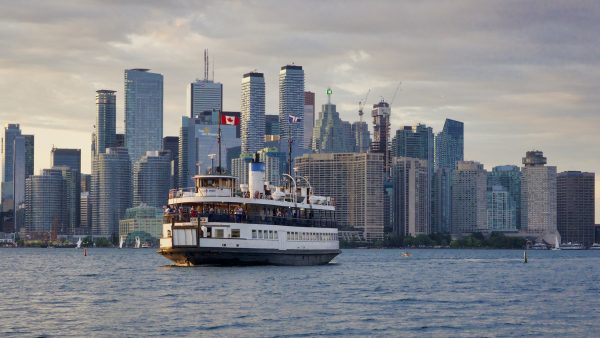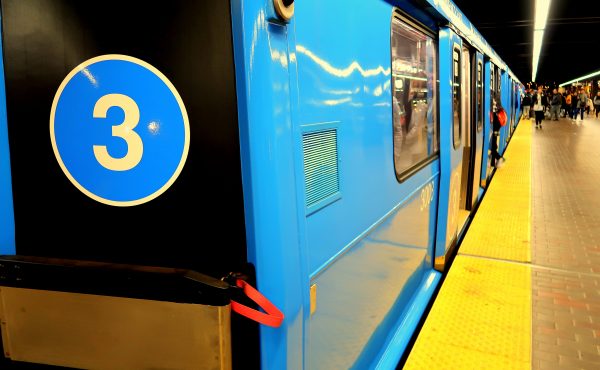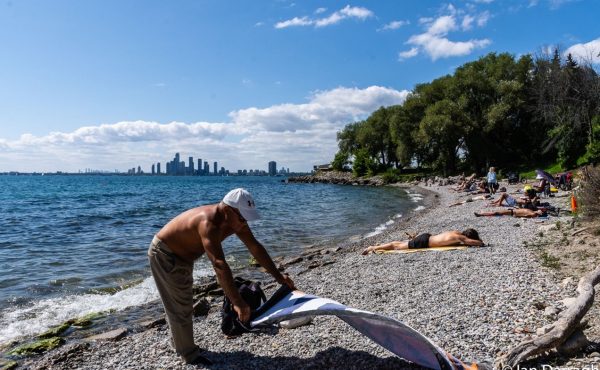
After the dock collision on the weekend that injured more than a dozen people and has reduced ferry service to the Toronto Islands for the rest of the summer, I found myself thinking about which other major cities would tolerate, year after year after year, the use of such antiquated transportation equipment.
Our reality is this: Toronto’s three main island ferries were built in 1935, 1939, and 1951. The eldest dates, astonishingly, back to the Great Depression, and is just shy of its 90th birthday.
Scanning potential candidates, I immediately thought of the historic San Francisco streetcars. While the picturesque Peter Witt cars were built in the late 1920s, the service itself only started in the early 1960s, when the Bay Area municipalities began building BART.
Another example: Lisbon’s storied Tram 28, which meanders through the city’s oldest neighbourhoods. The line dates to the early 20th century, but the vehicles currently in use were built in the late 1930s.
Both are as much tourist attractions as transportation infrastructure.
Then there’s the Staten Island Ferry, a critical element of New York City’s transit system. Ferries have been crossing New York’s harbour for generations, but the current fleet dates to the early 1980s, and includes four brand new ships, with capacities of 4,500 passengers.
According to the New York City DOT, those big new ships were commissioned by New York mayor Bill de Blasio as recently as 2014, and have come into service over the eight years since then. During that exact same period, we’ve been basically treading water out in the harbour.
In fact, for a municipality where the acronym SOGR — “state of good repair” — is sprinkled liberally throughout policy and budget documents pertaining to just about any kind of city asset, it is a scandal that council can’t replace such superannuated vessels. We seem to have as much trouble with this file as National Defense does with new fighter jets.
The so-called procurement process seems to date back about a decade, when Parks Forestry and Recreation embarked on a “fleet replacement strategy” in recognition of increasingly expensive repair bills. According to the most recent city staff report on the ferry file, dated late last year and adopted by council in January, the bulk of this molten process has played out during Mayor John Tory’s watch. In fact, ferry replacement came up during one of his first council meetings and has found its way onto the city’s agenda five times since then.
The earliest vote — March, 2015 — earmarked $11 million for the replacement of one ferry. That number got bumped up a few times, and, in the latest version, has ballooned to $63 million for a pair of electric ferries, to be delivered over the next 15 years (really).
City council also established a “Ferry Replacement Reserve Fund,” which, as of last fall, contains about $7.9 million, and will be drawn down in a couple of years. The balance for the three new boats will apparently come from debt and development charges, and the city plans to hold on to the Trillium as a heritage vessel.
“In recent years, growing passenger numbers and pressure on Toronto Island Park has stretched the fleet to its operating limits,” the staff report cautioned, cautiously. “While all the vessels are well maintained, they are significantly beyond the 20-year industry average lifespan for similar fresh water ferries … As vessels age, both reliability and safety naturally decrease and can increase the risk of unexpected failure and substantial and unexpected repair costs.”
Council, and certainly the mayor, have never really pressed city staff to accelerate either the ferry replacement process or the modernization of the docks. Indeed, the language of the staff report reveals the kind of ponderousness that afflicts too much local decision-making. There have been stakeholder consultations, a check-in with KPMG, a “pivot” towards the use of hybrid-electric equipment, more “due diligence,” and then, of course, a pause circa 2020. And here we are. Again.
I don’t want to suggest that city officials should just hand over tens of millions to the first ferry company that wanders into town with a slick presentation. But the city’s leisurely pace, and the inclination to constantly re-set the clock, is deeply problematic, especially when no one on council has the jam to say, `Stop, already, let’s do this thing.’
It is, of course, well worth pointing out that the transportation infrastructure project a few hundred metres east has received plenty of political love, money, and bureaucratic attention during Tory’s two terms as mayor. While the future of the eastern end of the Gardiner has been in play since the early 2000s, the notion of shifting its route north emerged after Rob Ford left office in 2014. Since then, council approved the plan, which then turned out to be twice as expensive as anyone realized. The $2.3 billion we’re spending on the Gardiner is enough to buy 92 ferries.
There’s little question in my mind that ferry replacement — alongside the long-overdue improvements to cattle pen that serves as the departure lounge — would occupy more of council’s attention if the bureaucrats and politicians involved didn’t have cottages, savings for international travel, driver’s licenses, etc. As with much of Toronto’s parks system, the people making decisions about its use, upkeep and future tend not to use those amenities, or at least not much.
Similarly, the city’s ridiculous intransigence on the prospect of building pedestrian bridges or tunnels to the island reveals Toronto’s deep-seated mistrust of public space, and access thereto. The Methodist ghosts that rattle around in the basement of City Hall never cease to offer up whispered warnings to the denizens of the second floor about the importance of controlling parks and thus ensuring social order — unless, of course, there’s a buck to be made.
I’d argue that the next council desperately needs to find a way to think differently about this unique part of the city. The demographic reality is that the two wards experiencing the highest rates of population growth — Fort York-Spadina and Toronto Centre — both touch the central waterfront. The islands will — or should — evolve into a neighbourhood park/green space for tens of thousands of high-rise dwellers with no backyards. Such uses, and not just summertime trips to Centreville or the beaches, are increasingly what’s at the other end of those now disrupted ferry rides.
In the early innings of an election that’s focused more on public space than I had anticipated, I would hope the men and women seeking high public office this fall will bring a sense of actual urgency to the matter of providing proper access to this extraordinary civic park.
A good place to begin leaarning? How about the tedious, snaking line-up to get on the ferry this weekend.





15 comments
The “eldest” ferry is the Trillium, built in 1910. It’s 112 years old.
Why use the historic “San Francisco streetcars” as an example when, as you point out, it only dates to 1960. The cable car system dates to the 1870s, and has been in almost continuous service since.
Kinda makes the rest of the article seem unreliably thought out.
I recall several years ago Toronto was supposed to be getting two used ferries from a Scandanavian country that has huge ferry fleet and they were getting two new bigger ones. We were to get their used and good condition (not old junk) ones with a much larger capacity and much faster thus making the crossing to/from our islands quicker to the extent capacity would exceed three of our largest ferries thus reducing operating costs while improving service.
Who sunk that planned deal?
First off a lot of people like the old ferries. But new boats with a 20 year life span???? My car is that old. There are ships that sailed the oceans for 40 50 years. A 20 year ferry is a poor use of tax dollars. (And at the speed Toronto does things, the first day of a new one would be the day you start ordering the next one.)
They bought the Dartmouth Ferry years ago but it just sits outside of the Toronto Fire & Marine Station 334.
https://www.cbc.ca/news/canada/nova-scotia/dartmouth-iii-ferry-toronto-centre-island-1.4193295
https://goo.gl/maps/PWHmRe6EpNXFJ9yE8
To Shaun Merritt: the Dartmouth Ferry wasn’t a City purchase. It was a private acquisition by the company that operates Centreville amusement park and a number of food concessions on the Island. It’s dormant, as I understand it, because its purchase wasn’t accompanied with a complete implementation plan.
Please send City Hall this article.
New ferries are way overdue.
A new ice-breaker is essential.
The recording on the ferry says to stay seated until the ferry stops.
People stand and fall, whose fault is it?
Shaun, the Dartmouth ferry was purchased by the company that runs Centreville – not the city. They thought they would use it to transport people to Centreville amusement area – I don’t know what happened to that plan. Perhaps the city would not allow it? Or hey couldn’t figure out where to dock it on the island? Don’t know. Regardless, it never went into service.
But I don’t think we can blame John Tory. Seems to me, discussions about new ferries and a new ferry dock – to replace the lovely concrete barracks, started long before him. Sad state of affairs, the city should be very embarrassed about the state of the boats, the docks and the services on the island.
This sentence sums up everything that’s wrong about Toronto’s poor approach to Parks operations and investment:
“There’s little question in my mind that ferry replacement — alongside the long-overdue improvements to cattle pen that serves as the departure lounge — would occupy more of council’s attention if the bureaucrats and politicians involved didn’t have cottages, savings for international travel, driver’s licenses, etc.”
Imagine if Toronto operated the roads and highways the same way it operates parks and ferries, there would be rioting in the streets!
We can’t have nice things because we keep electing politicians that hype tax increases “at or below the rate of inflation” and don’t understand that as the cost of things rises, so accordingly should the tax rate. Anyone that complains about their taxes going up shouldn’t be able to complain that the City can’t afford basic maintenance or (heaven forbid) upgrades. That stuff costs money. Put up, or shut up.
Dartmouth ferry was said to be too small to be classed as a ferry. It was then considered too big to be classed as a Taxi boat! Not sure of Beasley’s involvement. I seem to recall the original Toronto purchaser ran into the “classification” problem and then sold it off to someone for charter only usage and it rarely goes out on charter.
The article blames the recent ferry accident on the age of Toronto’s Island ferry fleet without providing a causal link. Certainly, an investigation is required, but witnesses report that the Sam McBride approached the dock too fast and ended up bumping into it.
Much newer ferries in service elsewhere have had terrible accidents involving loss of life. In this case, there were only some minor bumps and bruises. The boat was not damaged, and it returned to service four days later.
Our beautiful, well maintained old ferries are an attraction for both city residents and tourists. How much enjoyment would traveling in a tunnel to the Islands provide?
I wonder if we just sell the existing service and ferries to BC Ferries (a public company) and include as part of the contract that they have to introduce new ferries etc.
The tunnel or bridge only happens from the Portlands, and maybe it could be done by waterfront Toronto as a sweetener to get the LRT to Unwin…and increase property values in the south end of the Portlands…otherwise the 4km walk from Union will only probably useful for those arriving by car or by bike.
Why the cheap shot at Methodism?
Paul:
1. So much of what is wrong with Toronto’s political culture dates back to the ethos of Toronto The Good and it’s deep methodist roots. It’s a serious flaw of our city’s DNA and a cheap shot is more than warranted.
2. Also, every cult needs to as many cheap shots thrown at them.